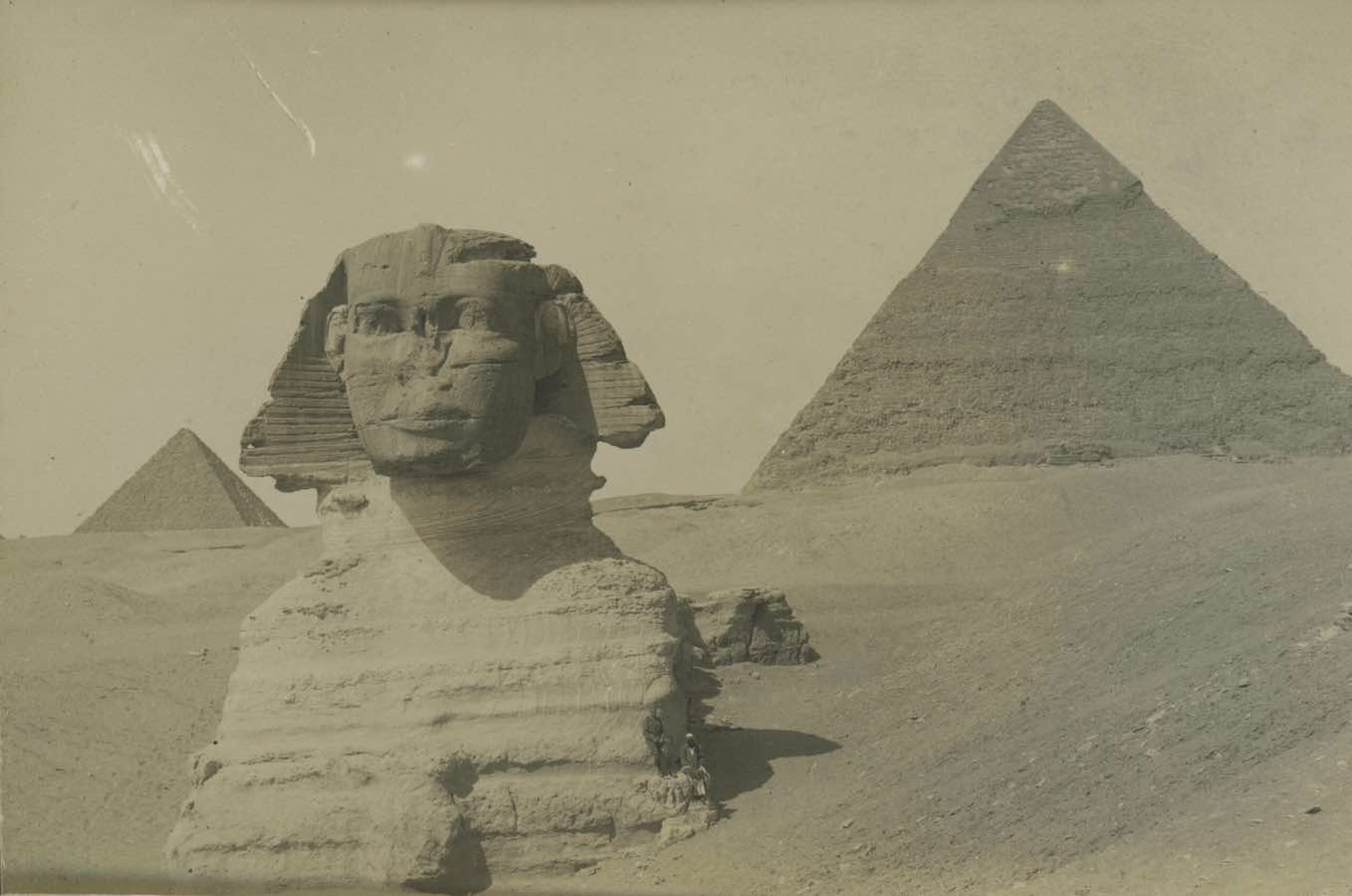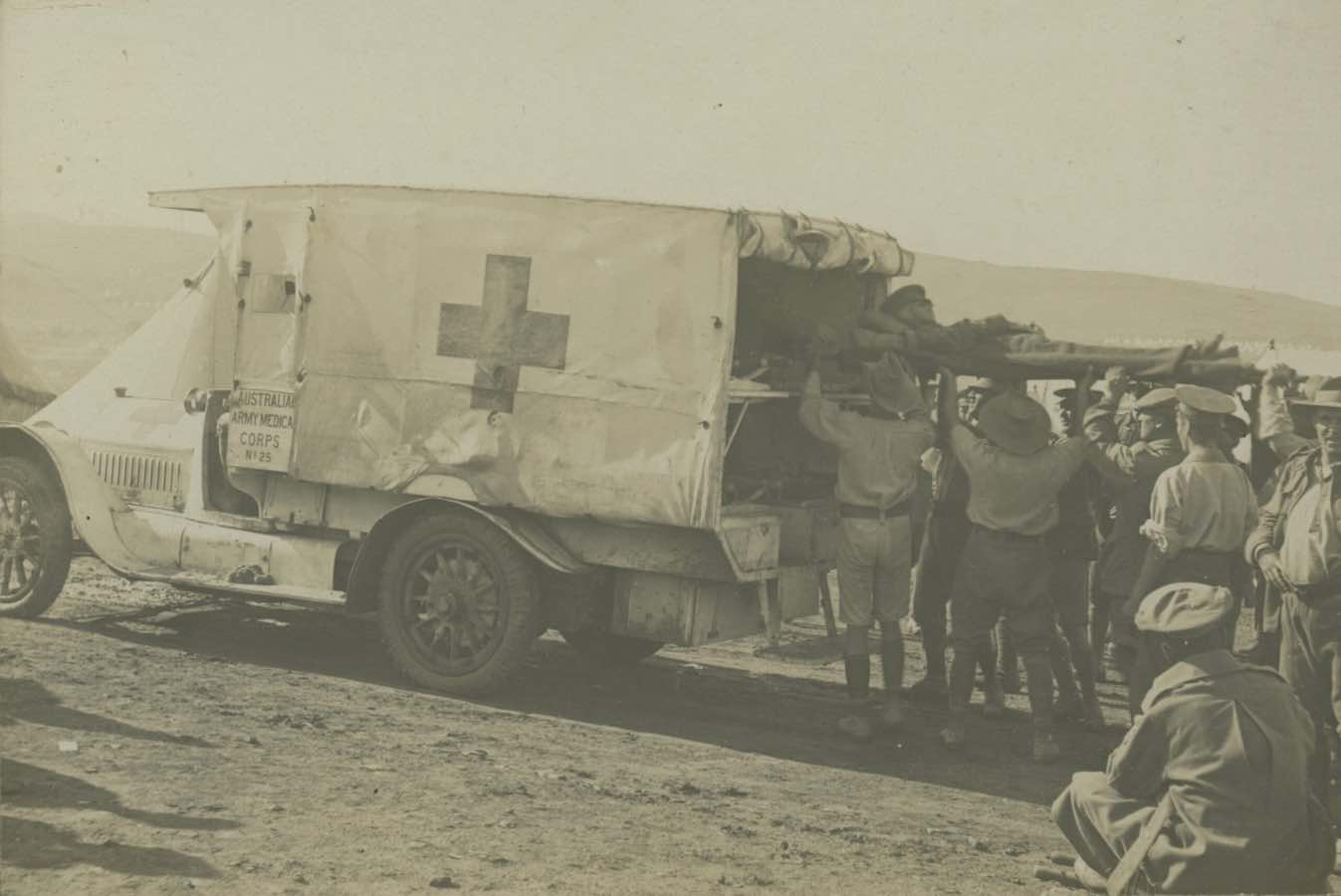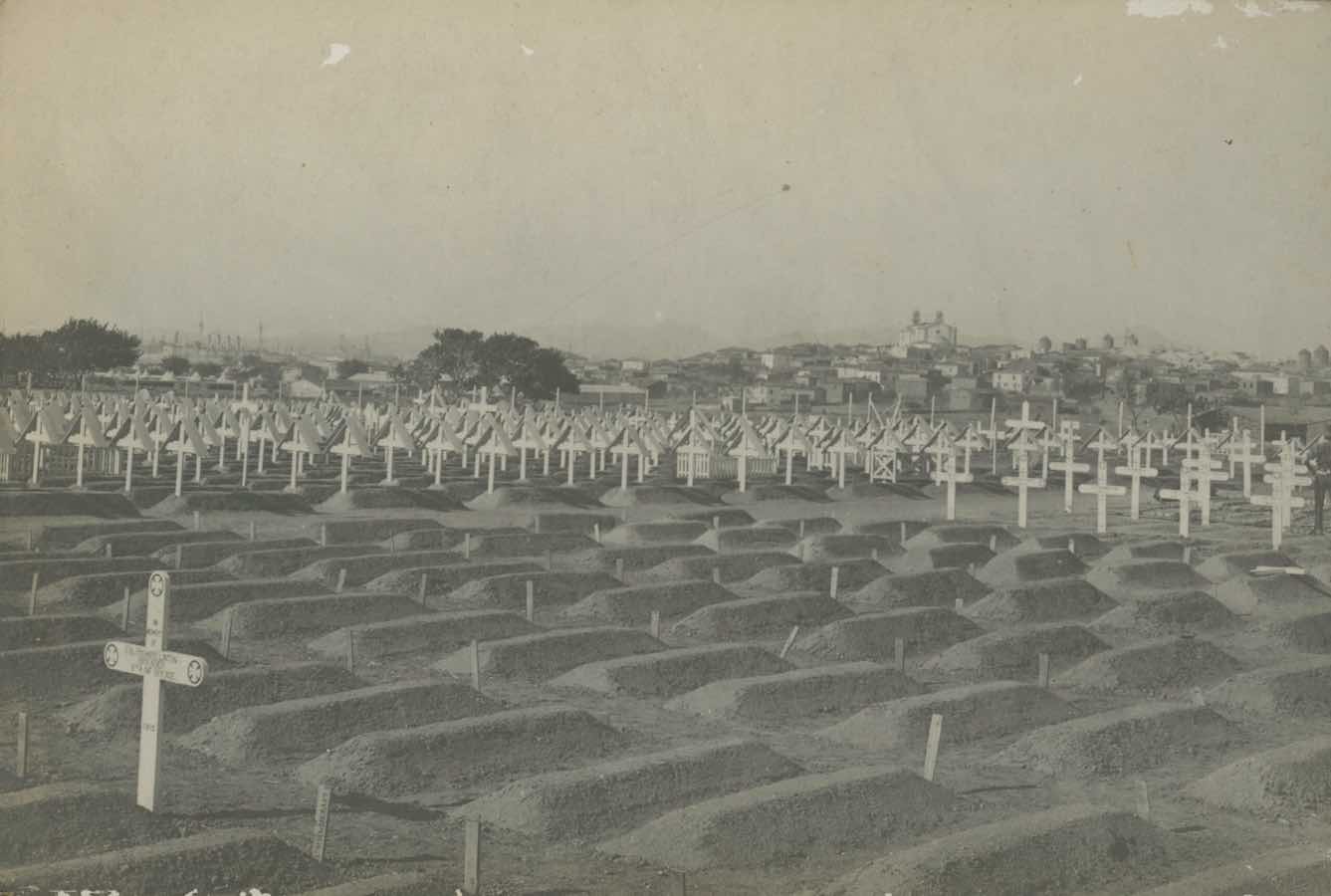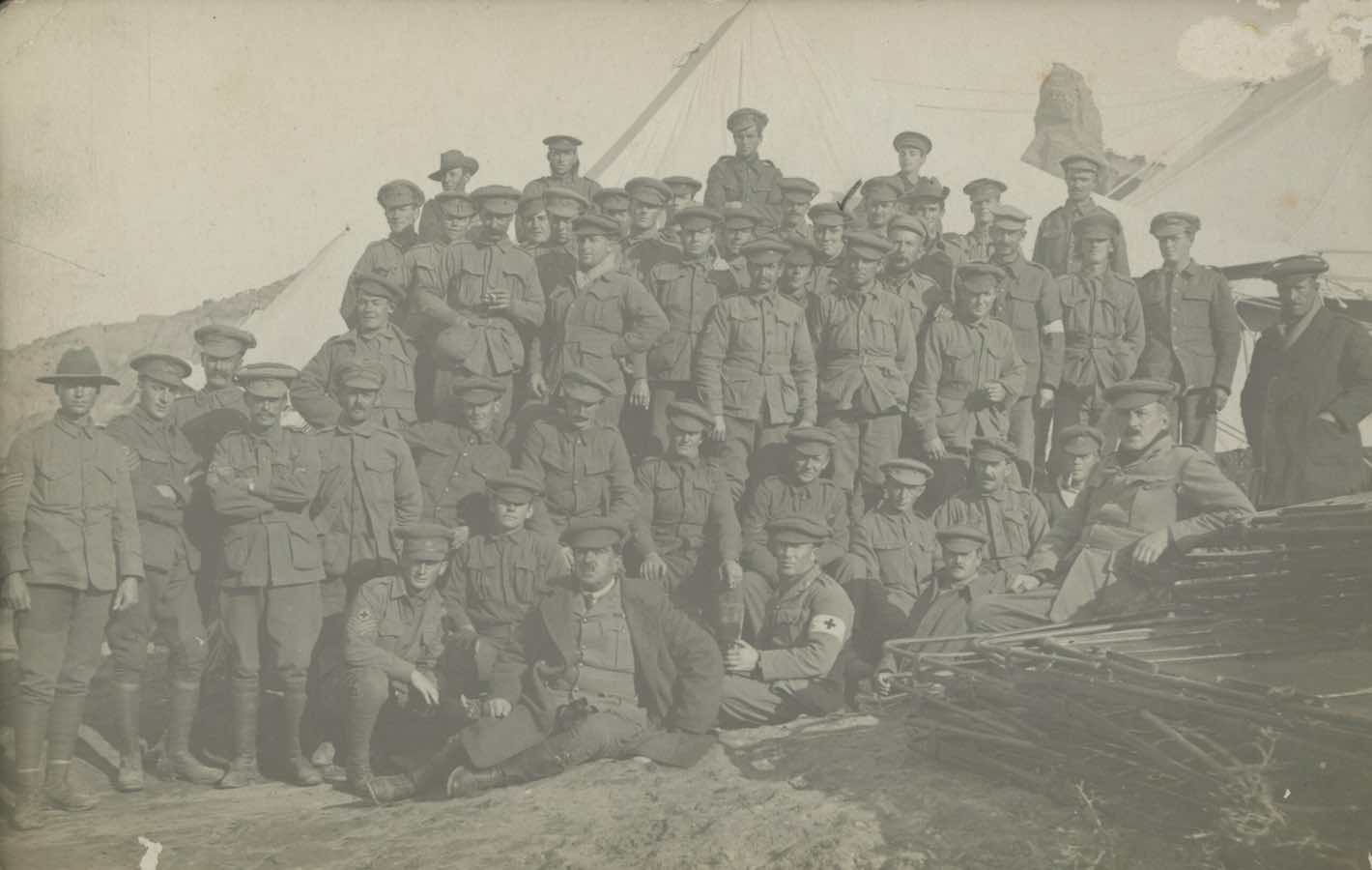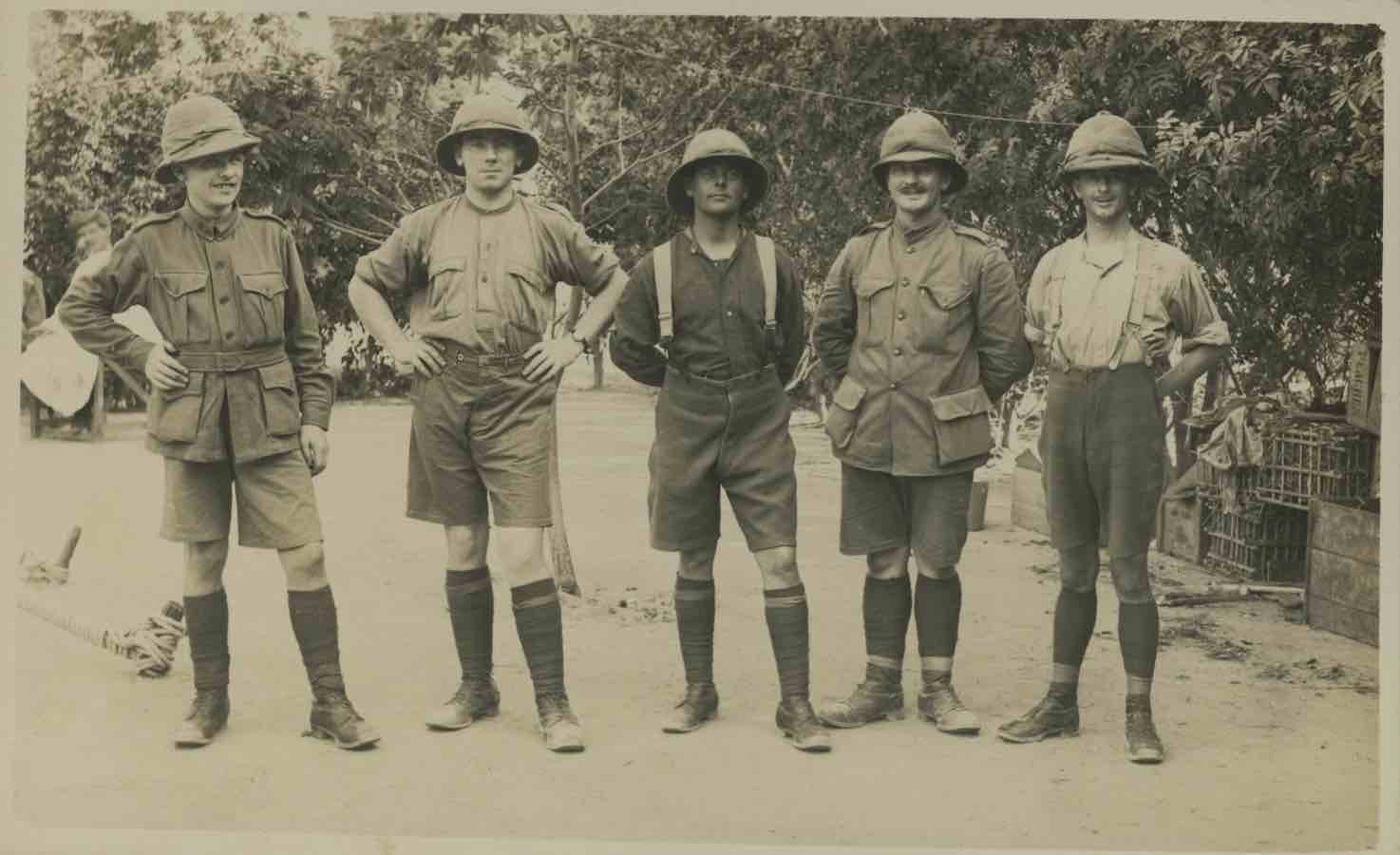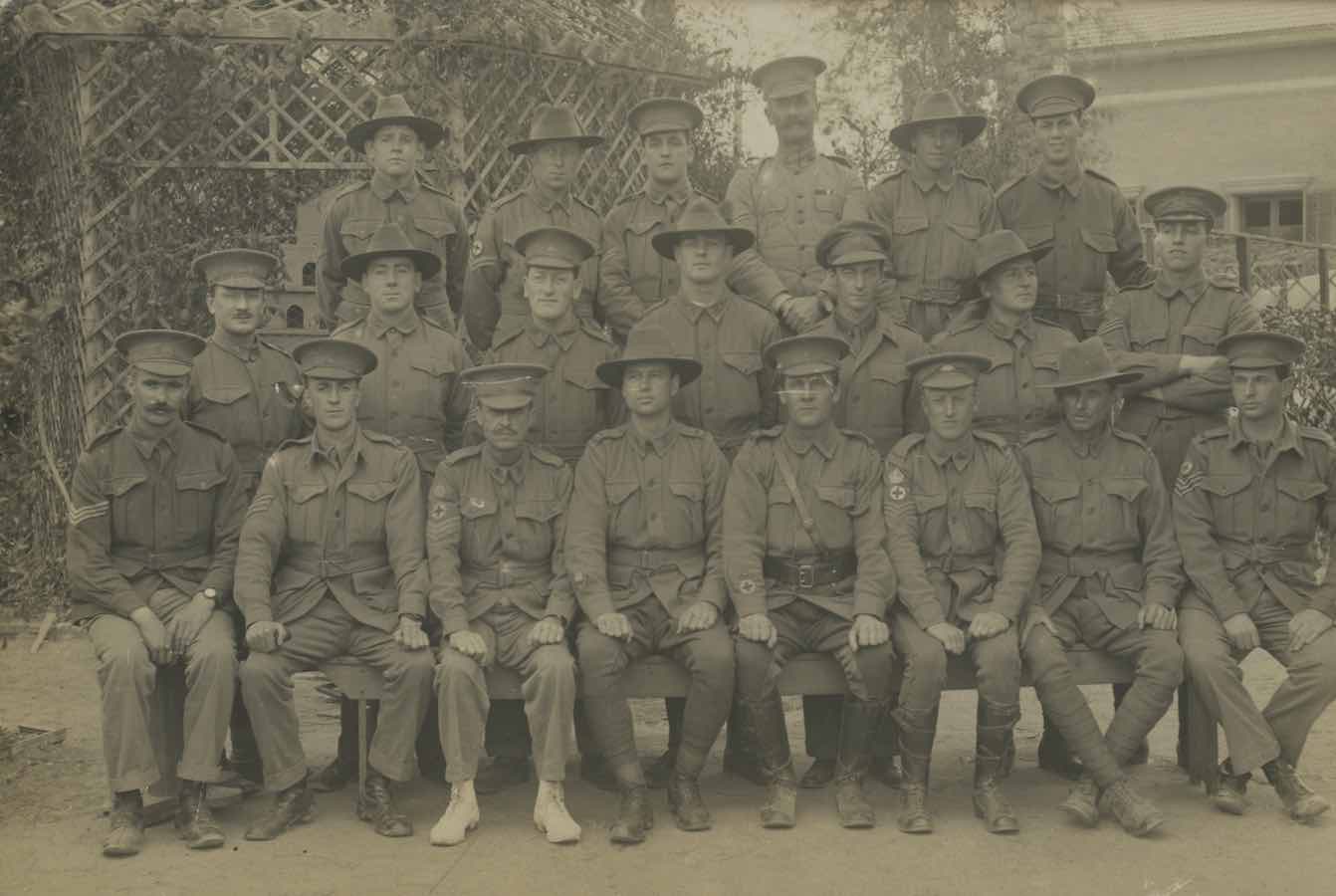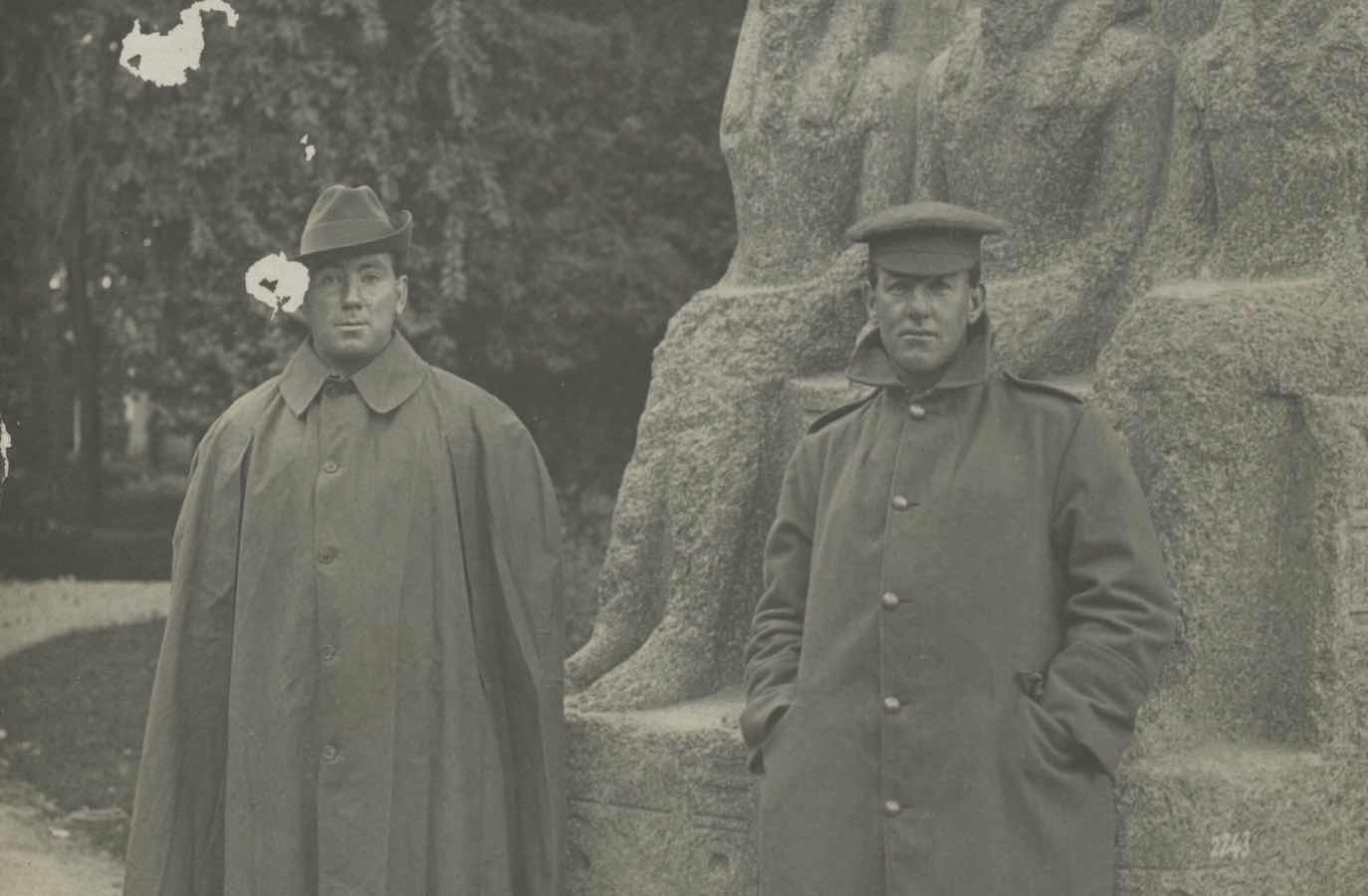Finding Vern: Postcards from a First World War Medic
This local story is part of our Researching Soldiers in Your Local Community NSW History project. Discover more like it or email your own research to digital@rahs.org.au for the opportunity to be published on the RAHS website.
Written by Elizabeth Heffernan, RAHS Intern
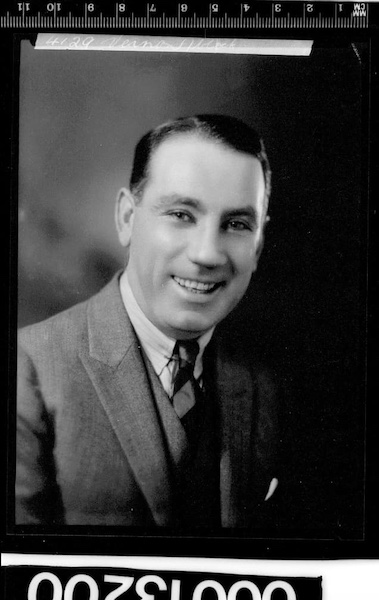
Studio portrait of singer Vernon Sellars, taken January 1928 by William James Hall. Courtesy Australian National Maritime Museum, 00013200.
An exciting find from our library collection is a set of approximately fifty postcards from World War I. Most are amateur photographs printed on postcard stock, briefly captioned but otherwise blank. Six of the postcards are clearly commercially produced, sent between the same two men: a ‘Mr Leslie Moten’ of Adelaide, from variations of ‘your pal Vern’. They feature more generic images of British steamships, the pyramids of Giza, and the royal palace at Athens, today used for Hellenic Parliament. Moten’s granddaughter donated the postcard set to the RAHS.
John Leslie Moten was a medic during the First World War. He enlisted in January 1917, embarked from Australia February 1918, and returned home on 1 May 1919. The photographs that are dated, however, seem to have been taken in 1915 and 1916, before Moten’s enlistment. Those that are undated are likely from the same period, as many are labelled in the same handwriting as the postcards from ‘Vern’ or depict similar scenes. So who, exactly, was he?
The photographs consist of portraits of soldiers in Greece and Egypt alongside images of tourist sites and local villagers. One soldier appears in more photographs than any other, often labelled on the reverse side as ‘with a pal’ or something similar. We can assume this soldier is Vern.
Some of the photographs are labelled on the reverse. From these, we know Vern was possibly a non-commissioned officer (NCO) stationed with the No. 1 Australian Stationary Hospital (ASH) in Ismailia, Egypt, in 1916. He is photographed with several friends in various places, including posing by a statue with Albert Jacka, the first Australian to receive the Victoria Cross during the war. We also know that Vern was likely from South Australia, as not only did ‘dear old Les’ live there, but a group photograph in the collection featuring Vern is labelled ‘original unit which left Adelaide’.
Please note that some of the postcards contain racist imagery and captions, a reflection of social and political attitudes of that period.
Finding Vern
With only a nickname to go by, finding Vern will not be as easy as researching your typical local soldier. Searching on the UNSW Canberra AIF Project page, there were more than 600 soldiers of the First AIF with ‘Vernon’ as a first, middle, or last name. Narrowing results by state still produced a significant number of records, and may rule out soldiers who were from South Australia, but whose next of kin (and as such their interstate address, which is sometimes mistakenly recorded as the soldier’s address also) were not.
The concrete evidence the postcards do provide us with is Vern’s association with the No. 1 ASH. The AIF Project page allows searches of specific units, though the records may be incomplete. Searching the No. 1 ASH unit personnel unearthed one result: Vernon Clarence Sellars, service number 1174, a single, Presbyterian commercial traveller, ranked sergeant at the time of his discharge.
His address on the AIF Project is the same as his next of kin’s: Carlton, Victoria. His unit is recorded as the 1st Field Ambulance. Could this somehow be Vern?
Though the AIF Project is an excellent synthesis of data from the nominal rolls held by the Australian War Memorial, for purposes of accuracy it is always best to refer to the original documents. The nominal roll Sellars is listed on does indeed record his unit as the 1st Field Ambulance. He was discharged on 15 November 1919.
Sellars’ personnel dossier held by the National Archives of Australia reveals more. His place of birth is recorded as Adelaide and his place of enlistment as Morphettville, a suburb of the city. On his attestation paper, he is shown to have enlisted on 30 September 1914 with the 1st ASH, though 1st Field Ambulance has been written at the top of the page in a different pen and hand. We can assume Sellars transferred between the two and, if he really is the same Vern from the postcards, that this occurred sometime during or after 1916. Indeed, Sellars’ statement of service records his first actions with the 1st Field Ambulance in France in October 1917.
Sellars was wounded in action while acting as a stretcher bearer and invalided to England in August 1918. Interestingly, before his discharge in November 1919, Sellars was granted three months of leave to attend a vocal course at the Royal Academy of Music in London.
Searching Sellars on Trove reveals those lessons paid off. Over 3,000 results appear, most of which at first glance seem to celebrate his post-war career as a baritone singer. A studio portrait of Sellars dated January 1928 is held by the Australian National Maritime Museum, originally unlabelled but identified in 2014. An article in the Museum’s magazine Signals describes Vernon’s post-war career, first as a pupil of famed Irish tenor Sir George Power, then a successful performer in his own right alongside his wife, soprano Patsie Hill. Sellars became a radio announcer in 1930 and upon the outbreak of the Second World War, re-enlisted in the Australian Army as a member of a Concert Party unit to entertain the troops.
Vernon Sellars died in 1968. He was 75. ‘Your pal Vern’ remains forever 23, smiling and postcard-picture perfect.
References
World War I postcards, papers of (John) Leslie Moten, Royal Australian Historical Society.
Vernon Clarence Sellars, AIF Project, UNSW Canberra, https://aif.adfa.edu.au/showPerson?pid=270356.
Vernon Clarence Sellars First World War nominal roll, Australian War Memorial, AWM133 47, https://www.awm.gov.au/collection/R2412764.
Vernon Clarence Sellars personnel dossier, National Archives of Australia, B2455, https://recordsearch.naa.gov.au/SearchNRetrieve/Interface/ViewImage.aspx?B=8078745.
Portrait of singer Vernon Sellars, Australian National Maritime Museum, 00013200, http://collections.anmm.gov.au/objects/36959.
Penny Edwell, ‘A face gets a name: Internet sleuths help identify a portrait’, Signals no. 108 (September–November 2014): 78, https://search.informit.org/doi/epdf/10.3316/informit.788463994930937.

